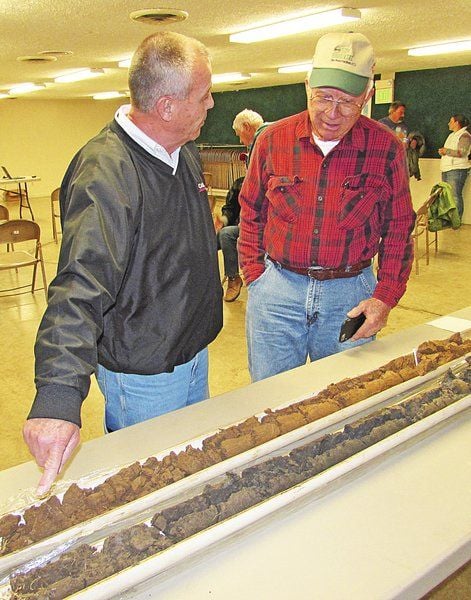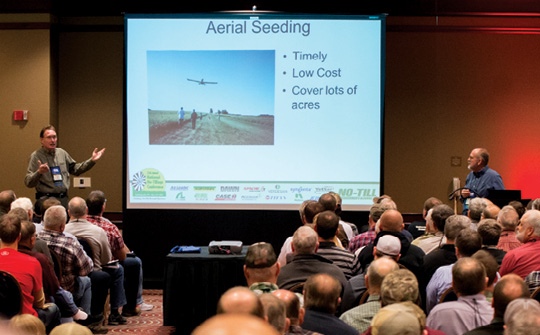The annual Farm Progress Show was held in Boone, Iowa, again this year, and cover crops were a popular topic of conversation.
According to a blog post by Practical Farmers of Iowa, it appears that “we’ve turned a corner with cover crops.” Basically, cover crops are becoming common knowledge, even if adoption is still lagging behind somewhat. The organization that boasts the slogan: “Don’t Farm Naked” wants everybody to keep something green on the fields year-round.

At the Farm Progress Show, a variety of growers spoke to the crowds about their experience with cover crop varieties, seeding methods and impacts on production. Cover crop research expert Sara Carlson also addressed those with questions about management of cover crops.
Practical Farmers has also come forth with new trial information on cover crops, specifically the use of cereal rye in rotation with corn and soybeans. Their findings include the fact that cover crops DO NOT negatively impact crop yields – unless you mismanage the cover crop. In fact, their study shows that cover crops can INCREASE yields, especially in soybeans. Take a look at their study by clicking here.
While Practical Farmers does not look specifically at annual ryegrass, other research over the past decades has shown annual ryegrass to also be a boost for corn and soybean production. Annual ryegrass has the advantage over cereal rye in that it doesn’t have as much biomass in vegetation in the spring. Cereal rye can be a problem when planting corn or soybeans into a dense, freshly-killed mat of cereal rye. For more information comparing annual ryegrass and cereal rye, click here.








